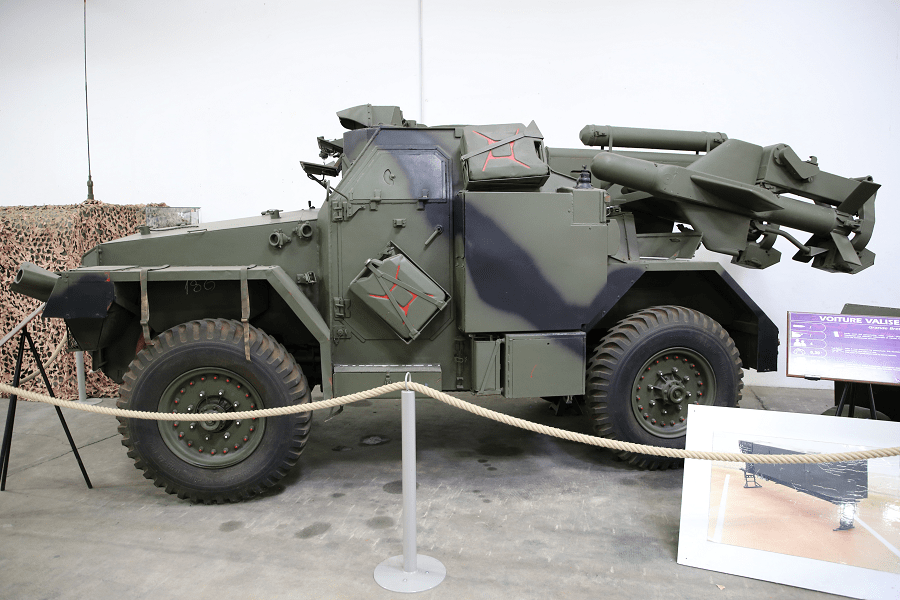The FV1620 Humber Hornet (FV1620, truck 1-ton, air portable, armoured launcher, Hornet launcher) was a specialised air-deployable armoured fighting vehicle designed to carry the Malkara, an anti-tank guided missile developed by Australia and the United Kingdom.
The Hornet was developed in the 1950s to provide British and Australian airborne units with an air-dropped long-range anti-tank capability. Based on the British Army’s FV1611 Humber “Pig” one-ton four-wheel drive armoured truck, it carried two Malkara, missiles on a retractable boom at the rear, as well as two reloads. It could be transported by air in a Blackburn Beverley and air-dropped on a cluster of 6 special parachutes.
The gunner fired the missiles from inside the cab and controlled them by means of a joystick attached to a wire which unreeled from the rear of the missile and connected to the sights. Electronic signals controlling the missile’s flight were transmitted through the wire.
With a 27 kg warhead, the Malkara missiles carried the largest warhead ever fitted to an anti-tank weapon and could destroy any tank in service at the time.
The vehicle remained in service with British units until being replaced in the 1970s by the Ferret armoured car Mk 5 equipped with Swingfire missiles. It was also operated by a squadron of the 2nd Royal Tank Regiment.
Manufacturer: Humber.
Humber Limited was a British manufacturer of bicycles, motorcycles, and cars incorporated and listed on the stock exchange in 1887. It took the name “Humber & Co Limited” because of the high reputation of the products of one of the constituent businesses that had belonged to Thomas Humber. A financial reconstruction in 1899 transferred its business to Humber Limited.
From an interest in motor vehicles beginning in 1896, the motor division became much more important than the cycle division and the cycle trade marks were sold to Raleigh in 1932. The motorcycles were withdrawn from sale during the depression of the 1930s.
The Malkara (from an Aboriginal word for “shield”) was one of the earliest guided anti-tank missiles (ATGMs). It was jointly developed by Australia and the United Kingdom between 1951 and 1954, and was in service from 1958 until gradually replaced by the Vickers Vigilant missile in the late 1960s. It was intended to be light enough to deploy with airborne forces, yet powerful enough to knock out any tank then in service. The basic form was later adapted for the short-range surface-to-air role as the Seacat and influenced the development of the Ikara.












